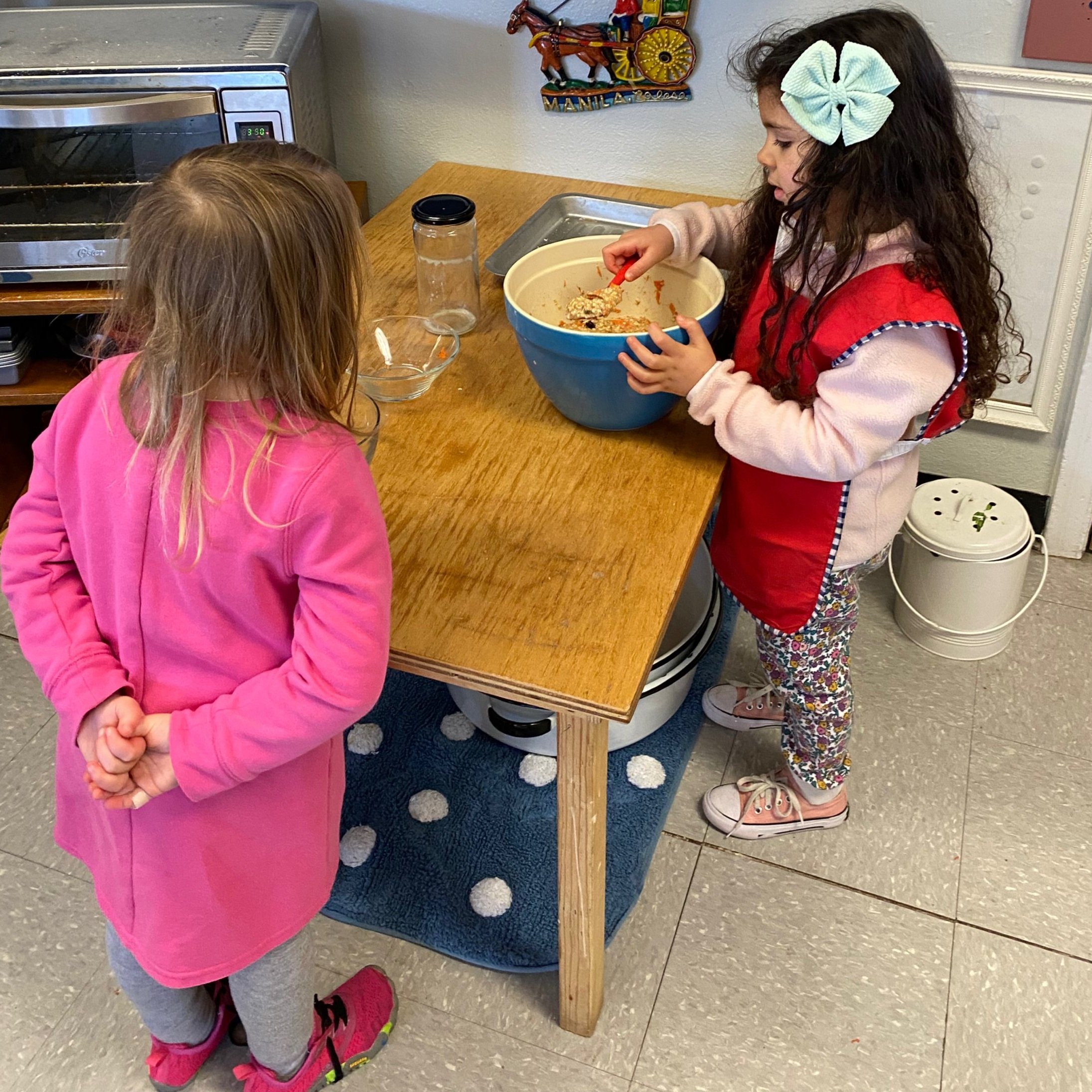The elementary has continued phasing in as the calendar has turned from August to September. In this space this week, let's hear some of what has been going on in the elementary community, along with some general thoughts that have been rattling around in my brain since last winter.
1. The sixth years have been raising money for their culmination trip by selling bouquets on Wednesdays and Fridays. Large bouquets are $15. Small ones are $10. All are gorgeous. Bring the cash or a checkbook and get one of your very own! Last year's culmination trip was a camping expedition into the Shenandoah Valley National Park. This year's trip has not been planned yet, but the flowers are growing beautifully and so the children are taking advantage!
2. Last January, Jesse McCarthy came to our school and gave our community a wonderful presentation that included a very interesting clip that has remained in my memory. It was a sped up video of an infant trying to reach a toy. Even played at a higher speed, it is shocking how many people had a visceral interior reaction to help the child, even though the infant was not going through any distress or experiencing any frustration. Rather, the child was focused and engaged. It was 15 minutes of important muscle exercise and brain work. How many of us would end the striving of the child by handing them the toy? If we did so, would we be helping them, or helping ourselves? In what way are we depriving our elementary aged children of those same struggles?
3. So far this week, the children have received many math presentations, along with the younger folks learning about the names of geographic landforms and geometry, and the older folks getting a parts of speech review and their first chemistry lesson. In our first lesson on this subject, we discussed different particle sizes--the scientific explanation for how helium atoms can escape a tightly tied balloon, leaving it sadly hovering a few inches above the ground after a few days. If you want to see this in action at home, combine equal parts water and rubbing alcohol in a very exact measuring tool. You should end up with surprisingly less than you thought. The alcohol molecules will "fill in" space between the water molecules, causing a 10% loss of volume. For example, 50ml of water and 50ml of rubbing alcohol should result in 90ml of liquid, not the expected 100!
4. It seems that we as English speakers are always being sucked into the quicksand which is the debasing of our language. I was reminded of this when in a conversation with my father recently, he reacted to sad news by calling it "incredible". It took me a second to realize he was using the word in its original form, meaning unbelievable. Society turns against the word "punishment", for instance, so it is replaced by "consequence", which not only robs us of the true meaning of that word, but also eventually causes "consequence" to take on a dark and ominous connotation.
The more I think of discipline at our school, the more I think that one of the things that makes us unique is our commitment to helping children make a firm mental connection between actions and consequence, cause and effect. That is why we make our consequences logical: recess actions result in recess consequences. This is also why we encourage children to make work its own reward rather than encouraging an addiction to a certain kind of adult attention. It is why you won't hear us saying "good job". But we know that negative things will happen in a school year. What about the child who needs to know that their actions are hurting themselves or others, in some way small or large? We pledge that our justice will not be retributive. All consequences, whether positive or negative, will be pedagogical. They will be logical and individualized. Keep in mind that for the justice oriented second plane child, "individualized consequences" can make their injustice radar go off! There is a great desire in our class community for all to be treated equally, but also a great appreciation that they are treated as an individual and not an anonymous member of a mass of humanity.
5. A contingent of children in the class were dedicated listeners to our read aloud of an abridged adaptation of Mark Twain's The Adventures of Tom Sawyer. The want Huckleberry Finn next, but Mrs. Mello is in favor of The Swiss Family Robinson. Thank you to the people who helped us purchase some beautiful copies of the Great Illustrated Classics series. Children love the masterful plots of classic literature, even if they are not ready for the vocabulary and themes of the primary sources. This got me thinking: while I am always haranguing you to read out loud at your house, it would also be a great thing to tell stories. Connect them to family and place. Ham it up. Your children love you. They want to know the things you have seen and heard.
6. Brain science makes it clearer with every discovery that every single thing we do is "educational". Our every moment is forming us into what we will be in the future. Our minds are always strengthening the connections we use. The habits we practice become our personalities, our minds. So, do not wait to encourage virtue in yourselves and in your children. There is no time like the present. Every day we wait to pray daily, read daily, or practice gratitude daily will be days in which we strengthen the connections that will make building those habits in the future all the more difficult. Our daily life is the teacher that works seven days a week and takes no summers off. The language we speak at home will be what we hear our children speak. If we are verbally cruel or violent with our children, we are teaching them the wrong lesson, one it is hard to unlearn.
7. We have made two loaves with our bread machine so far this year. As always, it was a learning experience. First off, we used fresh rosemary rather than dried rosemary for the first time. What makes dried herbs so potent compared to their fresh cousins? It all has to do with water's propensity to dilute flavor. So, the second time we tripled the rosemary content and got a better result. We also made our second loaf with some gluten free flour--generously donated by a family in the class for just such experimenting. All steps were the same, all ingredients but one were the same. Why was the gluten free loaf smaller? This has everything to do with gluten's strength and ability to trap gas bubbles as the yeast does its yeasty work. Gluten free flour loses more gas produced by the yeast, resulting in a smaller loaf. Now, what does the strength of this gluten have to do with our difficulty digesting it? Asking questions and searching for connections is a daily habit in our classroom. Make it so in your home. Model curiosity for your children. You are exactly the sort of people they want to be when they grow up.






